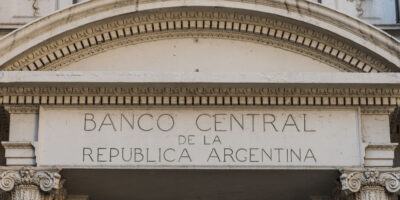The Ideal Money Is Global

Money is an institutional technology that promotes trade. It enables users to overcome the difficulties of barter when trust is insufficient at a relatively low information cost. More generally, it allows a society to achieve a more desirable allocation than could be achieved without money. When considering the desirability of alternative monies, then, one should not forget the extent to which those monies facilitate exchange.
If facilitating exchange were the only issue, the ideal money would circulate as widely as possible. A common currency reduces information costs by making cross-border comparisons less onerous. It reduces transaction costs by eliminating the need to convert prices or exchange one money for another before transacting. And it reduces the riskiness of cross-border production plans since, under a common currency, such plans are not subject to exchange rate risk. As a result, a common currency promotes exchange both directly, by lowering the costs of exchange, and indirectly, by increasing productivity. If evaluated solely on the grounds of facilitating exchange, then, the ideal money would be global.
The standard view maintains that facilitating exchange is not the only issue, however, since expanding the domain of a money also expands the domain of monetary policy — or, more generally, the mechanism to govern the supply of money. A money circulating over the most expansive region possible cannot have a money-supply mechanism tailored to the various constituent regions. If the marginal benefit of expanding the circulation (that is, the gains from additional exchanges made possible by a common currency) is diminishing while the marginal cost (that is, the losses from the less well-tailored common money-supply mechanism) is increasing, the optimal currency area might be smaller than the maximum currency area.
In considering the size of the optimal currency area, I take it for granted that the money-supply mechanism will be conducted as well as is possible over the currency area. The only question, then, is whether a more narrowly tailored money-supply mechanism would improve matters. I argue that it would not.
Contrary to chalkboard abstractions, nominal shocks do not hit all people in a given region equally. A general increase in the demand to hold money, for example, results from the specific increases of specific people in specific places (perhaps mitigated by the specific decreases of others), which almost certainly vary by degree. Each person demanding more money will have a specific willingness to pay for that money. The financial system will tend to allocate the available funds to the highest bidders.
Hence, a general increase in the supply of money to offset a general increase in money demand will tend to channel funds to the specific people demanding more money. A common currency area can have but one money-supply mechanism. However, that money-supply mechanism gets tailored to the needs of the constituent regions through the financial system.
What about regional real shocks? Price-level differences between regions that are consistent with real underlying fundamentals are relative price differences. They convey important information about relative scarcity and, hence, should not be seen as a problem. The cost of living is lower in Montgomery, Alabama (population: 198,218) than in New York City(population: 8,398,748). But you would have to live in Montgomery to get the discount.
The lack of folks moving from New York to Alabama suggests few think the discount is large enough to warrant their expected decline in quality of life. No economist is puzzled by the difference in price between ground beef and steak. Why, then, do some worry about the difference in the cost of living across the constituent regions of a common currency area?
Likewise, changes in the real underlying fundamentals should be reflected by changes in regional price levels. If there is a drought in Nebraska, for example, farmers in Nebraska will produce less corn. Ranchers there will pay more for seed corn, both because domestic corn is more scarce and because there are additional transport costs for imported substitutes.
Prices will rise in general — that is, in Nebraska and elsewhere. But the effect will be especially pronounced in Nebraska since it is relatively less productive following the drought. And there is nothing that changing the supply of money can do to improve matters since Nebraskans really do have less purchasing power. They are not as productive as they would have been without the drought.
The benefits from exchange increase with the circulation of money. A common currency area prevents a regionally specific money-supply mechanism. However, the financial system routes funds to those demanding them and remaining differences in regional price levels are relative price differences. Taken together, this implies that the optimal currency area is the maximum currency area. In other words, the ideal money is global.








